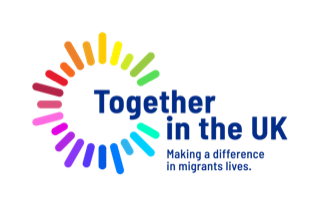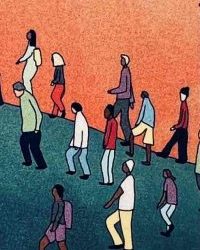Sinéad Mangan-Mc Hale Linked-In profile
A decade-by-decade snapshot of the UK’s approach to migration from2000 to now. A time when great changes are happening around the world with turmoil for millions of people. This report aims to give an overview of some of the key happenings.
Our third article looks at the story of migration from 2000 to now. A time when great changes happened around the world and a time of turmoil for millions of people. This report is not intended to be a comprehensive or legal review of the period, but rather it aims to give an overview of some of the key happenings. Contents are based on desk research.
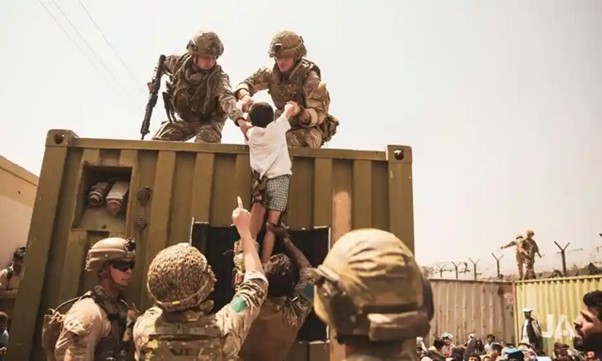
Kabul Evacuation
The 2000s
The 2000s started with a sigh of relief as the UK and the rest of the world survived the Y2K scare. The so-called “Millennium Bug” failed to cause the anticipated computer-based havoc; however, the rest of the 2000s saw a world of tragic acts of terrorism, humanitarian disasters, and political and economic upheavals impacting millions.
The tragic death of Stephen Lawrence in 1993, a murder and its subsequent police investigation motivated by racism led to the Race Relations (Amendment) Act 2000. From a senseless killing, Mr Lawrence left a legacy that placed “a general duty” on all public authorities to promote race equality and make this goal explicit in all their operations. The amendment reflected the government pillar of integration for immigrants and refugees as it tried to develop policies around community cohesion.
Another turning point of the early 2000s was the introduction of The Nationality, Immigration and Asylum Act of 2002. This Act and other policy changes around the same period aimed to accommodate foreign-born workers and students. Economic immigration began more prevalent, and the UK introduced visas for highly skilled workers without a job offer. This was apt as the 2004 EU expansion increased migrants from Eastern Europe. The strong UK economy attracted many Eastern Europeans, and between May 2004 and May 2009, an estimated 1.3 million people from the 2004 EU member states arrived.
In addition, the UK introduced policies to encourage international students. Many of the blog guests TGIUK interviewed initially came to the UK as international students as they were impressed with the high education standard. The second wave of immigrants came to the UK following the 2008 global recession and the eurozone debt crisis.
However, the 9/11 (2001) terrorist attacks in the US and the 7/7 (2005) terrorist attacks in London had a long-lasting change in discriminatory behaviour towards immigrants, particularly certain minorities. It also brought about an increased security approach and new visa controls on people attempting to come into the UK for work or family purposes.
The 2000s regrettably saw a tragic uprise in refugees and their increasingly desperate attempts to flee war, discrimination, oppression and famine. Situations such as the war in Afghanistan (2001-2021), the 2003 US-led invasion of Iraq, and the genocide in Darfur (2003) resulted in a global wave of forcibly displaced people seeking refugees, and many arrived in the UK.
In June 2000, 58 of 60 Chinese immigrants being smuggled into the UK by organised human traffickers suffocated in the back of a refrigerated lorry. The overcrowded and under-resourced Sangatte refugee camp near Calais led to many asylum seekers smuggling through the Channel Tunnel; at one stage, an estimated 400 refugees attempted to enter the UK via the tunnel every night.
Towards the end of the 2000s, the government took steps that both hindered and helped the situation. According to The Migrations Policy Institute, 2008 saw the issuing of Biometric Permits for all non-European residents planning to spend six months or more in the UK and a five-tier Points-Based System (PBS) for anyone coming to the UK for work. It also began imposing severe sanctions on companies employing “irregular immigrants”* while imposing restrictions on public services such as non-emergency health care. And in contrast, granted legal status to 60,000 to 100,000 people from 2000 to 2009, most of whom had been in the country for 13 years or more (seven years for members of immigrant families) or had long-outstanding asylum.
The 2010
The decade began reeling from the economic impacts of the global financial crisis, a rise in nationalism, a refugee crisis that still abounds, wars and uprisings in the Middle East, acts of terrorism in Manchester and London, and a Brexit referendum fought and won on the grounds of ‘immigration’. However, some lighter notes included a successful 2012 Olympics and a series of royal weddings and births. Social media exploded into all our lives, enabling faster access and sharing of real news, misinformation, and fake news – the jury is still out on whether social media has enhanced or damaged our lives.
Migrants continued to enter the UK during the 2010s. At the start of the decade, annual net migration to the UK in 2010 was 252,000 – based on figures from the Office for National Statistics, the highest calendar year figure on record. These numbers prompted a pledge from the government to cut net migration to tens of thousands by 2015. In 2010 they announced a cap of 21,700 on the number of skilled workers from outside the European Economic Area allowed into the UK.
2010 saw the landmark ruling that changed the handling of asylum seekers based on sexual orientation or identity. Previously, the UK could and did refuse asylum based on sexuality, instructing LGBTQ+ refugees to return to their home country and hide their sexuality to avoid persecution. Read Aloysius Ssali’s story, an LGBTQ asylum seeker and how he is now helping others in similar situations.
2012 saw the implementation of what is known as the “Hostile Environment”. A series of strategies aimed at reducing illegal immigration by making life so difficult that migrants would choose to leave. The policies cut off access to public services, including healthcare and increased the requirement for adequate paperwork to gain work or rent a property. In this hostile anti-immigration culture, the Windrush Scandal proved to be a significant embarrassment to the government. More importantly, it had severe consequences for those who did not have the required documentation. According to the Joint Council for the Welfare of Immigrants, these immigrants now settled in the UK with children and grandchildren were suddenly told they must prove they had lived in the UK before 1973. And they had to have at least one legal document for every year they had lived in the UK. Even the HM Revenue and Customs only requires five years of records. Many were unable to find the proper document (a situation not helped by the fact that despite being advised against it, in 2009, the Home Office began disposing of millions of paper records, including landing cards). They were now considered “illegal immigrants”. In 2017 it emerged that hundreds of the Windrush Generation unable to find the necessary” documentation and subject to the Hostile Environment policies had been wrongly detained, denied legal rights and deported.
In 2016, the UK held a referendum, which stunned almost 50% of the UK population, the EU member states and the whole world. Just under 52% of UK voters elected to leave the UK, causing a shockwave across the country and beyond. According to Professor Jonathan Portes, immigration was a critical factor in the 2016 Brexit referendum.
“The British public’s concern about the issue [immigration] was one of the major reasons why David Cameron was forced to call the landmark vote in June of that year, and it went on to be a subject of crucial importance throughout the campaign.”
Indeed for the 60% of voters over 65 who voted to leave, their main concern was the immigration issue. They saw a threat to their British identity and culture caused by people coming to their country without any, to their minds, control. Their beliefs were fuelled by right-wing British media, which have a history of carrying incendiary and false stories about asylum seekers and immigrants, implying they received better benefits, housing, work, etc. before locally born citizens.
With wars and uprisings raging in the Middle East, and Africa, the world witnessed a refugee crisis of a scale never seen before. In a 2015 United Nations Association – UK report (UNA-UK), displaced people reached almost 60 million. The conflicts in Syria and South Sudan, along with the long-standing wars in Afghanistan and Somalia, forced “millions to leave their homes”. This refugee crisis was compounded by humanitarian disasters caused by ever-increasing environmental and climate issues. According to The Migrations Observatory, roughly 29,500 refugees settled in the UK from January 1 2010, to December 31 2020. Most were nationals of Syria (68%), and 18% were sub-Saharan Africans. While the number of refugees formed the strongest arguments in the pro-Brexit campaign, according to EuropeNow, England played only a small part in offering support to refugees. Their figures suggest that,
“Compared to other countries in the EU, the UK also saw one of the lowest numbers of asylum applications, with just over 39,000 asylum applications in 2015, compared with Germany’s 441,800 asylum applications in 2015.”
If you have never been forced to flee your country, it can be hard to understand the extreme acts of desperation refugees will take. Sadly, those acts of desperation can lead to tragedy and images of washed-up bodies on shores, overcrowded rubber dinghies, and floating life jackets have become all too familiar. And while shock and outrage follow in the immediate aftermath, too soon, we all go back to our day-to-day lives. A report on the Institute of Race Relations gives a shocking roll call for deaths among asylum seekers for June and July 2017. It is harrowing reading.
The 2020s
The main headline of this new decade, while only a few years in, was the impact of a global pandemic that impacted virtually every country. According to the World Health Organisation, COVID, as of June 10, cost the lives of 6,305,358 people and infected over 532,201,291. Technology proved to be a much-needed lifeline, with social and business interactions conducted via ZOOM or Teams and a new abbreviation entered our lexicon “Working from home (WFH)”.
COVID affected society; businesses and schools were closed, people were expected to stay indoors, travel within and outside the country was severely restricted, and visa centres were closed. This economic and social turmoil had huge impacts on the immigration system. The almost non-existent international travel drastically reduced the number of economic migrants coming to the UK. With businesses closed, particularly the hospitality industry, many migrants chose to return to their country of origin (when possible) during this challenging period. Research gives varying statistics, with one report suggesting that between 2019 and 2020, some 1.3 million foreign-born people may have left. The report by Michael O’Connor and Jonathan Portes suggests given the economic situation and access to health care,
“For many migrants, especially those from eastern, central and south-eastern Europe and especially those who have arrived recently or have family back home, the choice would have been to stay here, with no job, less or no money, and pay for relatively expensive rented accommodation – or return home to family, with lower costs and most likely less risk of catching Covid. Not a hard choice.”
COVID-19 did not distinguish between rich or poor, black or white, migrant, refugee or citizen but for some, accessing medical care was an additional risk. A study undertaken by JCWI confirmed that the Hostile Environment policies prevented migrants from accessing healthcare, even if they were entitled to do so. And for undocumented migrants, there was the additional fear that should they seek medical care; the NHS might pass their data to the Home Office, putting them at risk of deportation. In addition, once vaccinations were available, the same people, often at a higher risk of contracting COVID, could not secure the necessary treatment to limit the impact and spread of COVID-19.
COVID was not the only factor impacting the movement of immigrants to the UK. The new immigration policies and conditions post-Brexit can be challenging. EU migrants already working in the UK had to apply for theEU Settlement Scheme by June 302021, with no extension given to this date despite the restrictions imposed by the government to combat the spread of COVID. A visa is necessary for people wishing to come to the UK after December 31 2020, whether from the EU or other parts of the world. Under the post-Brexit, points-based immigration system, visas are awarded on points scored. While this system allows UK employers to recruit skilled workers, it limits the availability of unskilled manual workers, impacting the hospitality industry and farming sector.
In a country endeavouring to get its economy back on its feet post-covid, the new immigration system is causing headaches for employers and the general public. Recent media reports on chaos at airports, cancelled flights, and a lack of luggage handlers may not just be due to Brexit. Still, the immigration process limits the ability to recruit overseas staff to fill the labour shortage. The government recently rejected a request by the aviation industry to allow them to recruit overseas workers. CEO of Jet2, Steve Heapy, is quoted in a BBC report as saying,
“Brexit has taken hundreds of thousands, if not millions of people out of the employment market, and that undoubtedly is having an impact,”
But while the UK and its public might be struggling to cope with post-COVID and post-Brexit conditions, the hardship of refugees continues unabated.
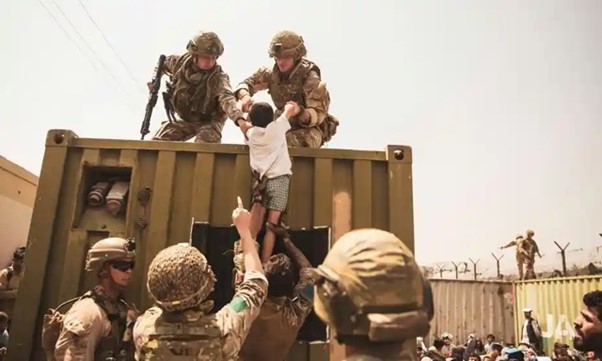
Few will forget the harrowing scenes at Kabul airport as British Troops withdrew from Afghanistan. The UK is accused of abandoning its Afghan allies, who worked alongside British troops with the understanding that the UK government would look after them. An ITV report quoted the cross-party Foreign Affairs Committee who accused Ministers of having a “total absence of a plan” for Afghans who supported the British mission, despite knowing for 18 months that the evacuations may be necessary if the US withdrew its troops. In April 2021, the government launched the Afghan Relocations and Assistance Policy (ARAP) to help settle Afghans in the UK. The Ministry of Defence reports that 9,000 have been relocated under this scheme. In January 2021, it launched the Afghan Citizens Resettlement Scheme (ACRS) for displaced Afghans, those under threat of persecution and those who supported the UK in Afghanistan, vulnerable people, including women and girls at risk, and members of minority groups at risk (including ethnic and religious minorities and LGBT people).
While official figures on visa requests are confusing, evidence given to the committee suggests that between 75,000 and 150,000 applied for evacuation, and only an estimated 5% received assistance, according to a BBC report. The committee’s findings, as reported by the Financial Times, called the UK withdrawal a “disaster” and a “betrayal”.

Drawing by Alina Potemska
On February 24, 2022, the world changed irrevocably for the men, women, and children of Ukraine when Russia invaded. Since then, more than 4,000 civilians have been killed, and more than 14 million people have been displaced, of which seven million have fled the country. The post-Brexit immigration process has hampered the arrival of Ukrainian refugees to the UK, as the government maintain the need for a visa and proper documentation. The two refugee schemes, the Ukraine Family Visa scheme and the newly devised Homes for Ukraine scheme, have had mixed success with accusations of a poorly planned process to help people in a timely and sympathetic manner. TGIUK has two powerful blogs which give personal insights into the emotional and mental impact of the war on Ukrainians.
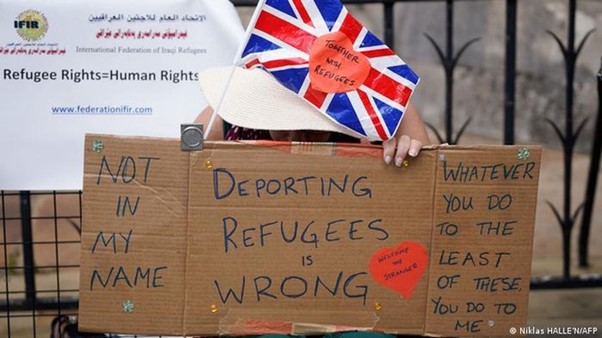
Against a background of a continuous flow of more than 10,000 refugees crossing the English channel in small and often dangerous boats this year alone, the government has started to issue formal “notices of intent” to advise that they are “in scope for relocation’ to Rwanda. This deportation of refugees arriving in the UK illegally to a country not known for its human rights has been described as “inhumane” and “cruel” by human rights organisation, while the Archbishop of Canterbury, Justin Welby, has said it was “ungodly”. In response, the Prime Minister has justified the policy by saying it is “the morally right thing to do”. And he portrays the scheme as means to tackle the problem of dangerous channel crossing by migrants in small boats at the hands of people traffickers and smugglers. Other plans include assigning the Royal Navy the responsibility of tackling the channel crossings and a new nationwide dispersal system in the UK to spread asylum seekers more equally among local authorities and opening new reception centres to reduce the use of hotels.
Over the last seventy years, the UK social and political mindset towards immigrants and refugees has varied dramatically. At times it appears that there is a “scale of attitudes”, a contrasting balance between tolerance and acceptance competing against intolerance and racism. During each decade the various UK governments struggled to meet the changing attitudes of the UK public. At times they have put into place legal actions to protect the rights of both immigrants and refugees. But as the mood of society changed, so too did their actions, resulting in restrictions limiting the movement and rights of people coming to this country.
